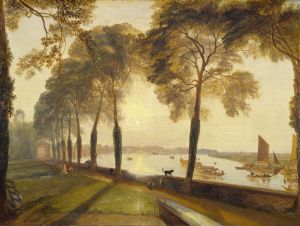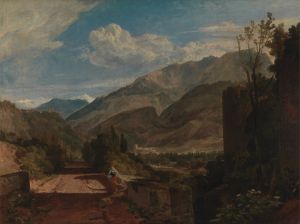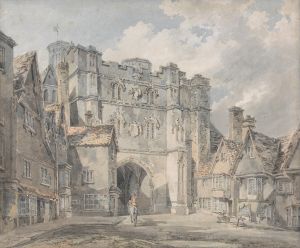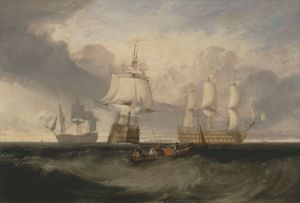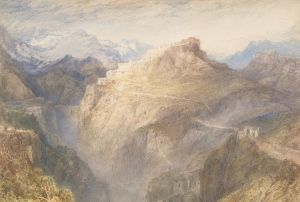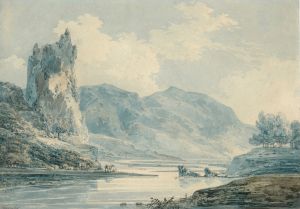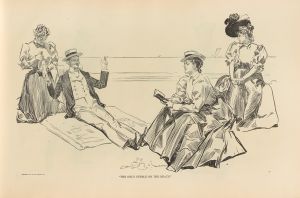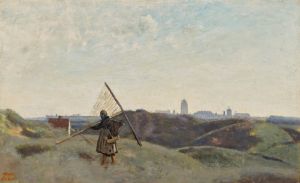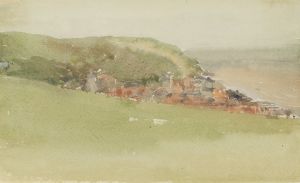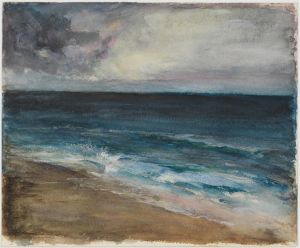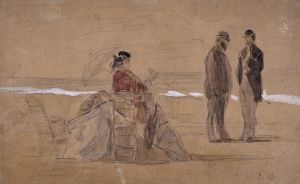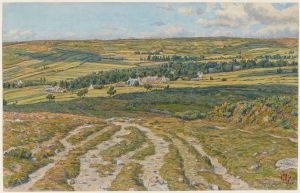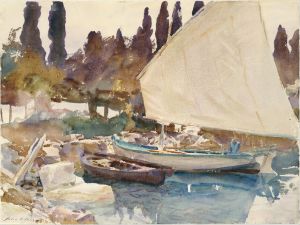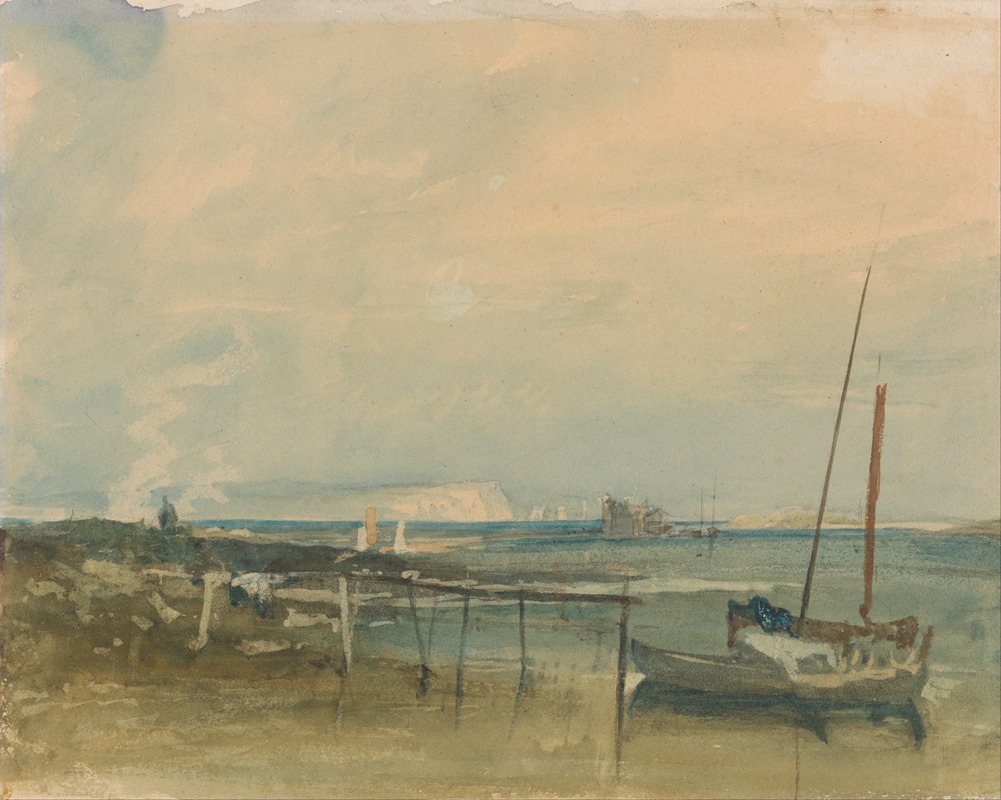
Coast Scene with White Cliffs and Boats on Shore
A hand-painted replica of Joseph Mallord William Turner’s masterpiece Coast Scene with White Cliffs and Boats on Shore, meticulously crafted by professional artists to capture the true essence of the original. Each piece is created with museum-quality canvas and rare mineral pigments, carefully painted by experienced artists with delicate brushstrokes and rich, layered colors to perfectly recreate the texture of the original artwork. Unlike machine-printed reproductions, this hand-painted version brings the painting to life, infused with the artist’s emotions and skill in every stroke. Whether for personal collection or home decoration, it instantly elevates the artistic atmosphere of any space.
"Coast Scene with White Cliffs and Boats on Shore" is a painting by the renowned British artist Joseph Mallord William Turner, often referred to simply as J.M.W. Turner. Turner, born in 1775, is celebrated for his expressive colorization, imaginative landscapes, and turbulent marine paintings. He is considered a pivotal figure in the transition from the classical to the modern era in art.
This particular painting, "Coast Scene with White Cliffs and Boats on Shore," exemplifies Turner's fascination with the sea and the British coastline, a recurring theme in his body of work. The painting captures a coastal scene characterized by the dramatic presence of white cliffs, a feature commonly associated with the southern coast of England, particularly the iconic White Cliffs of Dover. These cliffs have long been a symbol of Britain, representing both a natural wonder and a historical landmark.
In the painting, Turner employs his signature style, using light and color to evoke mood and atmosphere. The white cliffs dominate the background, their stark brightness contrasting with the darker, more tumultuous sea and sky. This contrast is a hallmark of Turner's work, as he often explored the interplay between light and shadow to create a sense of depth and drama.
In the foreground, boats are depicted on the shore, suggesting human activity and interaction with the natural environment. The presence of these boats may indicate a scene of fishing or trade, common activities along the British coast during Turner's time. The boats also serve to anchor the composition, providing a human element amidst the grandeur of the natural landscape.
Turner's technique in this painting reflects his innovative approach to capturing the essence of a scene. He was known for his ability to convey the power and majesty of nature, often using loose brushwork and a vibrant palette. This approach allows viewers to feel the energy of the scene, as if they are witnessing the dynamic interaction between sea, sky, and land.
The painting is a testament to Turner's mastery of the Romantic style, which emphasized emotion and individualism, often through the depiction of nature's sublime beauty and power. Turner's work, including "Coast Scene with White Cliffs and Boats on Shore," had a significant influence on later art movements, particularly Impressionism, as artists sought to capture the fleeting effects of light and atmosphere.
While specific details about the painting's creation, such as its exact date or the circumstances under which it was painted, may not be well-documented, it remains an important piece within Turner's oeuvre. It reflects his enduring interest in the natural world and his ability to transform a simple coastal scene into a profound artistic statement.
Today, Turner's paintings, including this one, are celebrated for their innovative use of color and light, and they continue to be studied and admired for their contribution to the development of modern art. Turner's legacy as a pioneer of landscape painting endures, and his works remain a vital part of art history, offering insight into both the natural world and the human experience.





